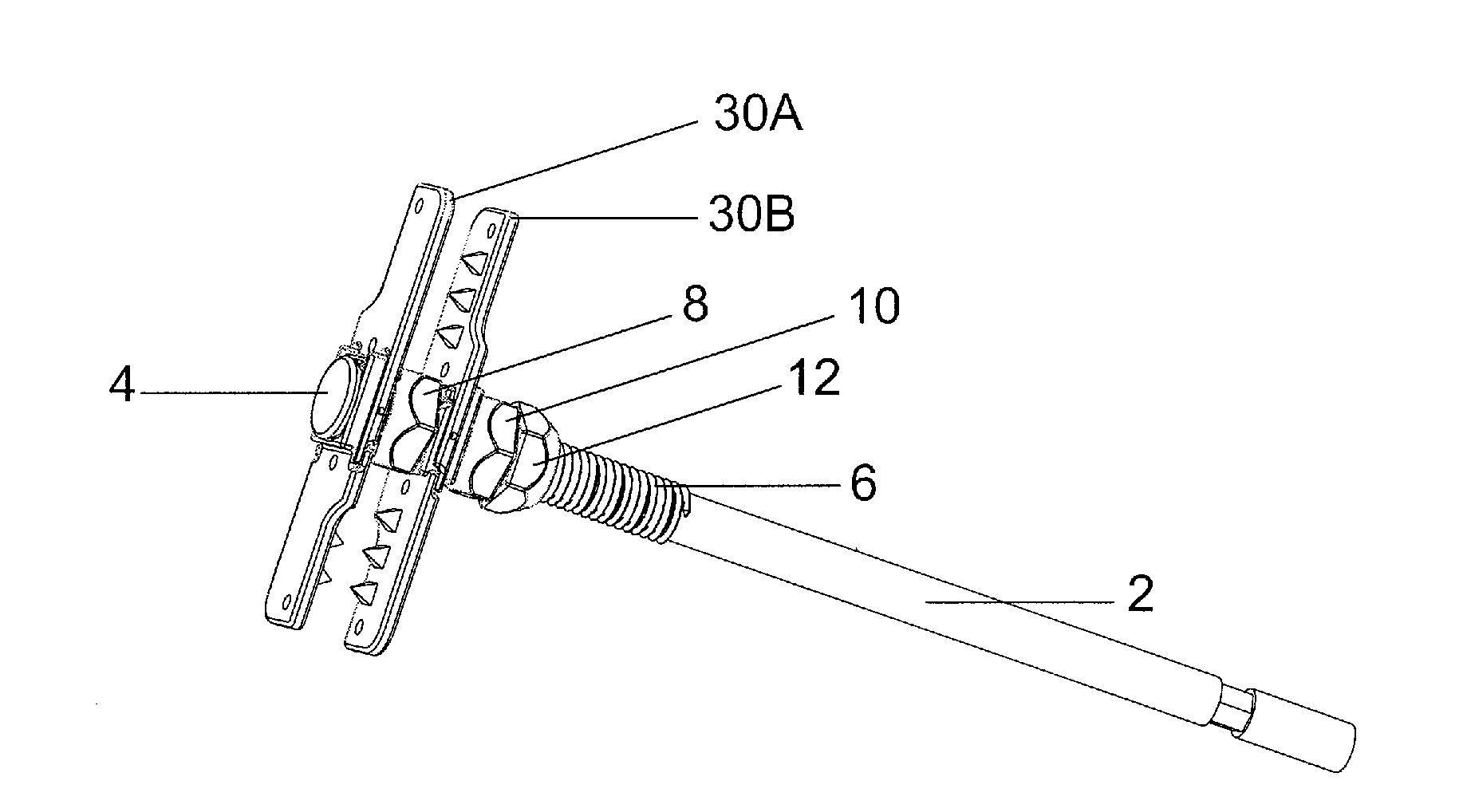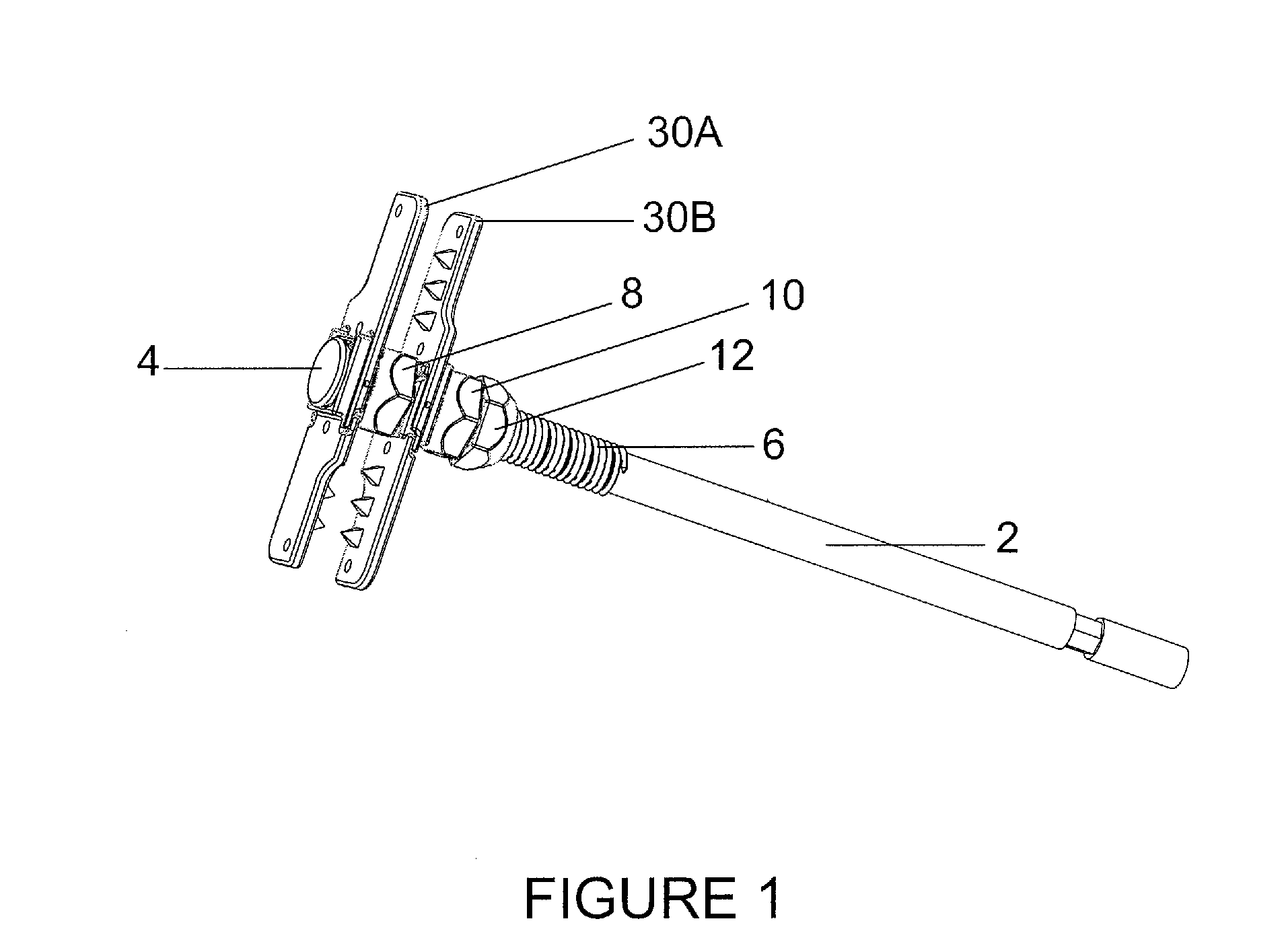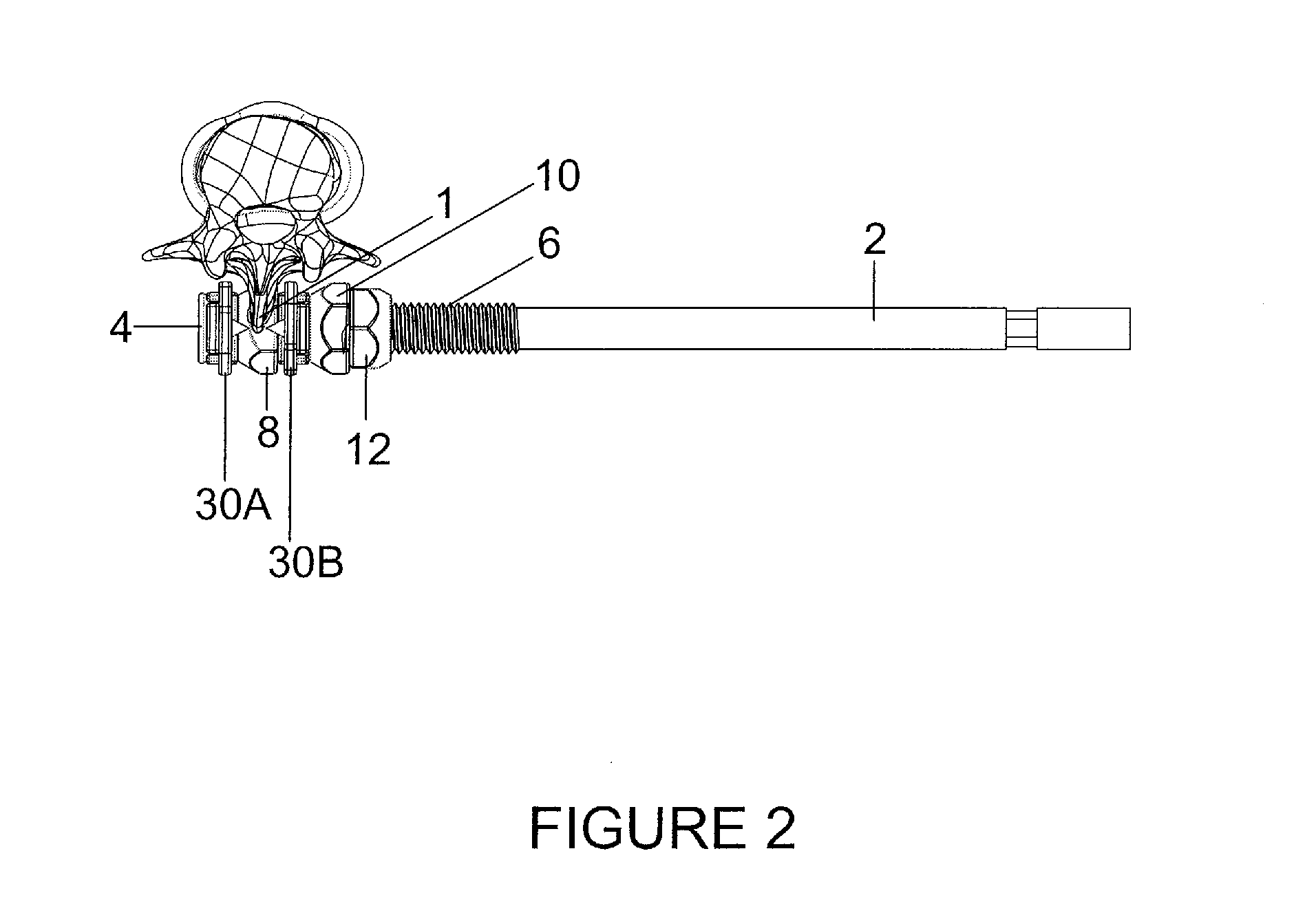Spinous process fixation plate and minimally invasive method for placement
- Summary
- Abstract
- Description
- Claims
- Application Information
AI Technical Summary
Benefits of technology
Problems solved by technology
Method used
Image
Examples
Embodiment Construction
[0035]FIG. 1 is a perspective view of the spinous process plates in an assembled orientation with the vertebrae and disc removed for clarity. As shown the spinous process bone fixation device includes a partially threaded bolt 2 having an enlarged bolt head 4 at one end and an engaging surface at the opposite end. The bolt 2 also includes a threaded portion 6 that extends from the head 4 partially along the length of the bolt 2. The device also includes a contralateral fixation plate 30A and an ipsilateral fixation plate 30B. Plates 30A and 30B are identical in construction. The device further includes a deployment nut 8, a lag nut 10 and a locking nut 12.
[0036]FIG. 2 is a top view of the spinous process fixation plate in operative engagement with the spinous process bone 1. The top surface of the contralateral fixation plate 30A engages the spinous process bone 1 and the ipsilateral fixation plate 30B engages the spinous process bone form the opposite side. Head 4 of bolt 2 and dep...
PUM
 Login to View More
Login to View More Abstract
Description
Claims
Application Information
 Login to View More
Login to View More - R&D
- Intellectual Property
- Life Sciences
- Materials
- Tech Scout
- Unparalleled Data Quality
- Higher Quality Content
- 60% Fewer Hallucinations
Browse by: Latest US Patents, China's latest patents, Technical Efficacy Thesaurus, Application Domain, Technology Topic, Popular Technical Reports.
© 2025 PatSnap. All rights reserved.Legal|Privacy policy|Modern Slavery Act Transparency Statement|Sitemap|About US| Contact US: help@patsnap.com



